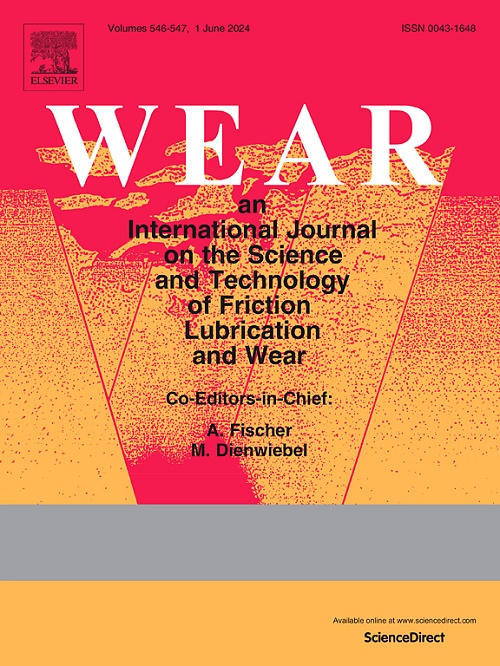Influence of tempering temperature on tribological behavior and damage characteristics of quenched U75V rail steel
IF 5.3
1区 工程技术
Q1 ENGINEERING, MECHANICAL
引用次数: 0
Abstract
The combined quenching and tempering treatment of railway rails is expected to simultaneously improve the wear resistance and fatigue resistance. However, the effects of tempering temperature on the tribological behavior and fatigue damage of quenched rails, as well as the underlying mechanisms, remain unclear. Therefore, in this study, friction and wear tests were conducted on quenched rails at different tempering temperatures to assess their damage. The results show that increasing the tempering temperature alleviates the initiation and propagation of large-area cracks on the rail surface, with large-angle cracks near 90° in the section transforming into inclined cracks similar to those observed in ordinary rails. Thus, the increase in tempering temperature reduces the material's brittleness and enhances its fatigue resistance.
回火温度对淬火U75V钢轨钢摩擦学性能及损伤特性的影响
铁路钢轨的调质复合处理有望同时提高其耐磨性和抗疲劳性。然而,回火温度对淬火钢轨的摩擦学行为和疲劳损伤的影响及其机制尚不清楚。因此,本研究对淬火钢轨进行了不同回火温度下的摩擦磨损试验,以评估其损伤程度。结果表明:提高回火温度可缓解钢轨表面大面积裂纹的萌生和扩展,截面90°附近的大角度裂纹转变为与普通钢轨相似的倾斜裂纹;因此,回火温度的升高降低了材料的脆性,提高了材料的抗疲劳性能。
本文章由计算机程序翻译,如有差异,请以英文原文为准。
求助全文
约1分钟内获得全文
求助全文
来源期刊

Wear
工程技术-材料科学:综合
CiteScore
8.80
自引率
8.00%
发文量
280
审稿时长
47 days
期刊介绍:
Wear journal is dedicated to the advancement of basic and applied knowledge concerning the nature of wear of materials. Broadly, topics of interest range from development of fundamental understanding of the mechanisms of wear to innovative solutions to practical engineering problems. Authors of experimental studies are expected to comment on the repeatability of the data, and whenever possible, conduct multiple measurements under similar testing conditions. Further, Wear embraces the highest standards of professional ethics, and the detection of matching content, either in written or graphical form, from other publications by the current authors or by others, may result in rejection.
 求助内容:
求助内容: 应助结果提醒方式:
应助结果提醒方式:


